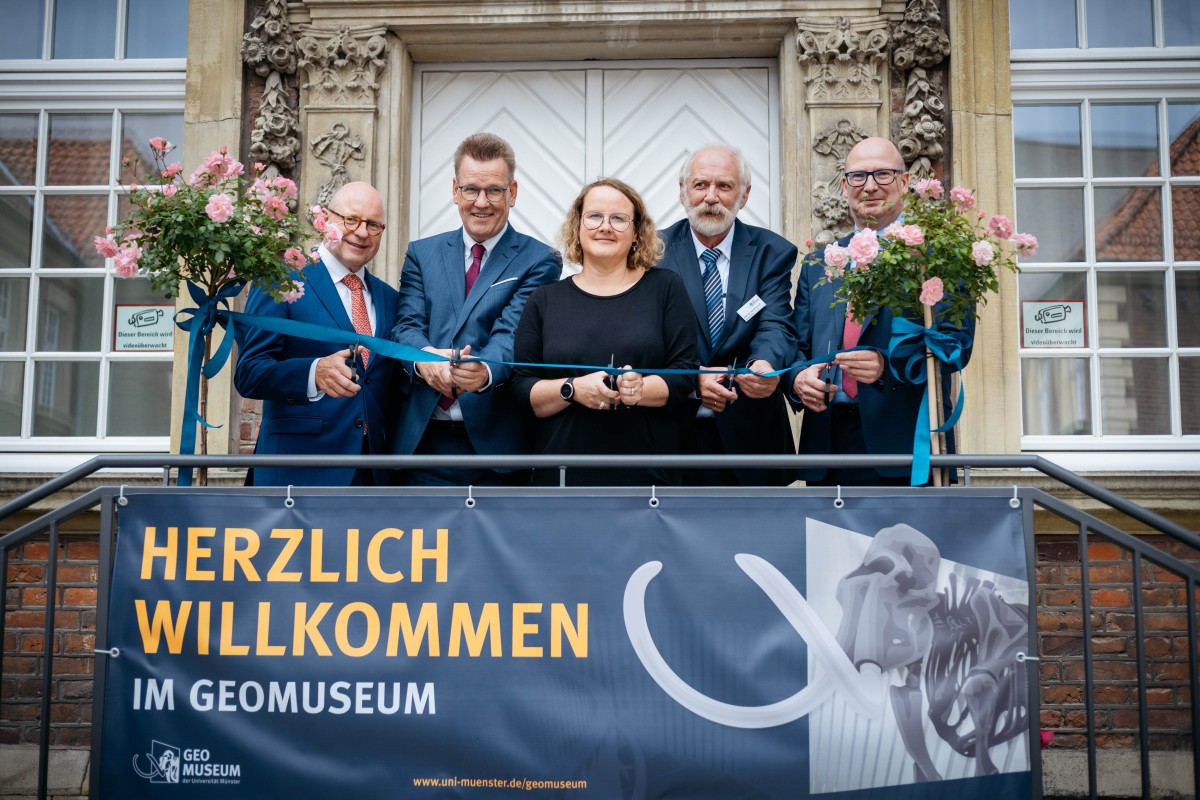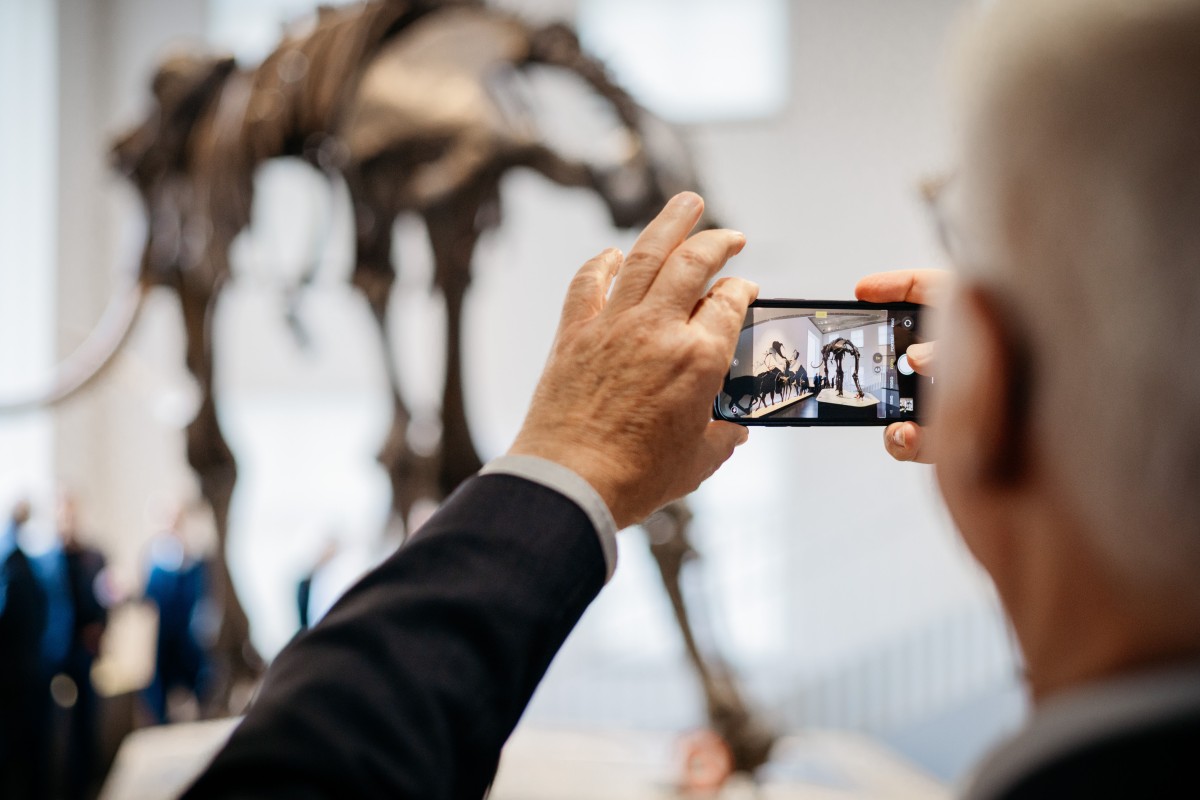
Geomuseum re-opened
After many years of conversion and renovation work, the University of Münster’s Geomuseum is now open again since yesterday (August 10). The displays – on 1,800 m2 of floor space and containing around 2,300 pieces of rock, minerals, fossils and other exhibits – tell a story of volcanic eruptions, the impacts of meteorites and changes in the Earth’s climate. Visitors can look at crystals under the microscope or take a seat in the “Geocinema”, the oldest lecture hall at the University, and make fluorescent stones light up.
The museum’s symbol – the “Ahlen Mammoth”: 5.2 metres long, 3.2 metres in height and around 43,000 years old – can already be seen from the outside through a large window in the direction of Domplatz. Inside the museum, visitors can trace the history of the Earth from the Big Bang up to the present day. The displays in the Baroque building explain for example what meteorites have to do with the Earth’s origins, why Münster once stood on the equator, and what happened to our fish from the Chalk Sea. The 14 themed areas show unique exhibits from Westphalia, including many originals of great scientific value.
On Thursday morning, the museum’s director, Prof. Harald Strauß, presented an ammonite from the Münsterland – as big as the palm of your hand, polished and mounted on wood – to the first visitor to the museum, ten-year-old Viktoria, who had come along with her father, Dr. Sven Korte. The family is spending just a few more days in Münster before they shortly move to the Caribbean, where Korte, a marine biologist, will be starting a new job with a pharmaceuticals company. “Viktoria is a fan of museums and she’s already been to all the other museums in Münster,” says Korte. When he read in the newspaper over breakfast about the museum re-opening, he and his daughter set off immediately. “Actually, my friend Fee Spannuth wanted to come along with us, but unfortunately she had no time,” said a disappointed young Viktoria. She very much enjoyed the displays, confidently handling the microscope at one of the museum’s interactive stops. The present she received from Harald Strauß will fit nicely into her hand luggage, she said, and will soon be displayed on the wall of her room over 7,000 kilometres away from Münster. “We’re delighted that we had the opportunity to come to the museum,” said Sven Korte. “It fits in well with Münster.”
Dr. Walter Kohlhaas is also among the first visitors to the museum. A hydrogeologist, he studied in the 1960s under Prof. Franz Lotze, who was at that time director of the Geological-Palaeontological Institute. Kohlhaas switched to Aachen to write his doctorate, but spent his working life with the German Army, back in Münster. “When I heard that the museum was re-opening, I was curious to see how things had changed in the building.” It was the mammoth, especially, which attracted the 85-year-old Kohlhaas. “We already thought the skeleton was impressive back in 1960. Right after my visit I’ll be phoning an old friend from my student days to tell him I’ve seen the mammoth again.”
The museum is located in Pferdegasse and is open to visitors from Tuesdays to Sundays, 10 am to 6 pm, and is open until 10 pm on every second Friday in the month. Admission is free. On every second Tuesday in the month, at 7 pm, students and researchers give talks in the Geomuseum about their research trips. On August 24 to 26 the newly designed Geomuseum will be participating in the City of Münster’s “Schauraum” cultural festival for the first time.
The museum:
In 1824 a “museum mineralogicum et zoologicum” was founded in Münster, moving to the Landsbergsche Kurie in 1880. In 1919 there followed the establishment of a Mineralogical Museum, and the two independent collections were merged into the Geomuseum in 2007. Since then, the museum was closed while it was being redesigned. The Institute of Geology and Palaeontology, the Institute of Mineralogy and the Institute of Planetology at the University of Münster provide funding for the Geomuseum.
It was above all the Friends and Sponsors of the Geomuseum Münster who provided financial support and put in much voluntary work for the conversion and redesigning of the museum. With the museum’s re-opening on August 10, Münster’s Museum Quarter round Pferdegasse is now complete. The Quarter also includes the LWL Museum of Art and Culture, as well as the University’s Bible Museum and the Archaeological Museum



